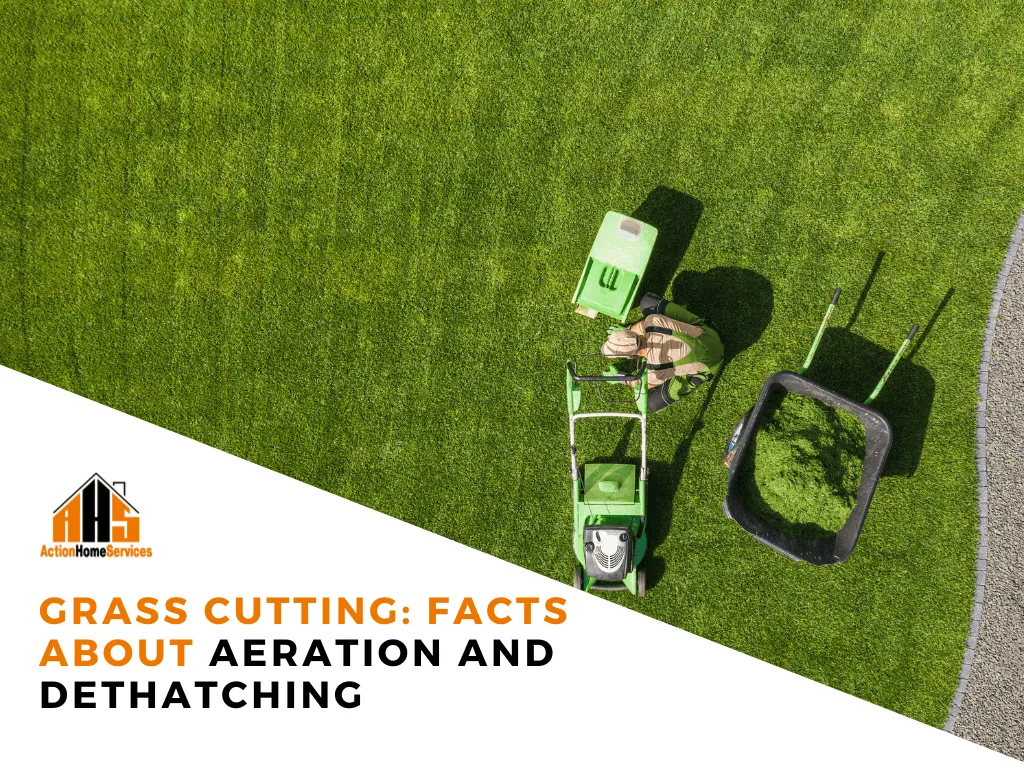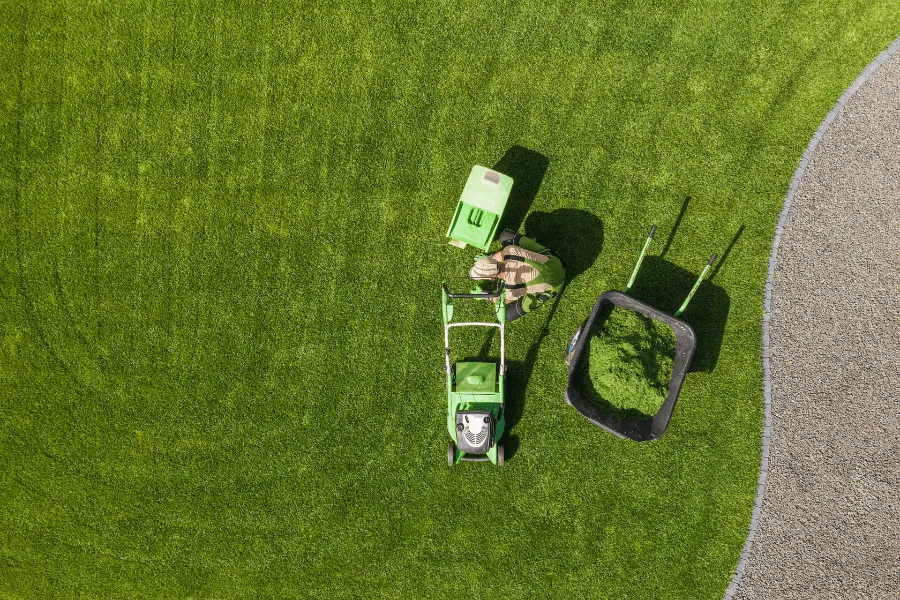
Having your lawn look green and healthy isn't just mowing it regularly. There are several key lawn maintenance practices you'll want to keep in mind if you really want a strong, healthy lawn, with them being aeration and dethatching. These two processes are the most responsible for your lawn growing well and healthy.
Aeration is when you poke holes into the soil to allow air, water, and nutrients to reach the roots, improving soil health and boosting nutrient uptake. Dethatching removes excess dead grass and debris that can prevent air and water from reaching the soil.
It's also recommended that you do more than just this and get professional landscaping services, to make sure your lawn can grow healthy and is well protected. Let's see what they do and why you need them.
What is Aeration?
Aeration is the act of poking holes in the ground, with them being small holes so air, water, and nutrients can get all the way down to the roots of your grass. It's like giving your lawn a big breath, letting it get their much needed the oxygen and nutrients to grow healthy.
Benefits of Aeration:
Improves Soil Health:
When your soil gets compacted, it becomes hard for roots to grow and extend. Aeration makes it less compact, allowing for space for roots to grow deeper and healthier. This literally is a life-saver in the health of your grass.
Enhances Water Absorption:
Just like with most plants, water is important for a healthy lawn. Aeration makes it so the water can actually get into the ground to the roots, instead of just flowing on top. This means your grass gets the hydration it needs without wasting water.
Boosts Nutrient Uptake:
Without proper aeration, nutrients can struggle to get down into the soil. By perforating the soil, you make it easier for essential nutrients to reach the roots, helping your lawn stay healthy and green.
Prevents Thatch Buildup:
Thatch is the layer of dead grass, roots, and other organic matter that can build up on your lawn. Aeration helps break down this buildup, preventing excess thatch from choking your lawn and causing long-term damage.
When to Aerate?
You’ll want to aerate your lawn during the growing season, either in the spring or fall, when the grass is actively growing. This is when the grass can heal the fastest and benefit most from the aeration process.

What is Dethatching?
Thatch is that layer of dead grass, roots, and debris that collects between the soil and the blades of grass. While a little thatch is normal, too much can create problems for your lawn. Dethatching is the process of removing this layer to help improve the health of your grass.
Benefits of Dethatching:
Prevents Disease:
Excessive thatch can trap moisture, which creates the perfect breeding ground for pests and diseases. Dethatching helps keep your lawn healthier and more resistant to these issues.
Improves Airflow:
The layer of thatch can block the flow of air to the roots. Dethatching helps the air circulate better, making sure that your grass gets the oxygen it needs to thrive.
Enhances Fertilizer Effectiveness:
When there’s too much thatch, fertilizers can have trouble reaching the soil. Dethatching clears the way for your fertilizers to penetrate the soil directly, making them more effective.
Prevents Water Blockage:
If too much thatch builds up, water can’t soak into the soil properly, leading to pooling on top of the grass. Dethatching helps to promote even water distribution, making sure your grass gets the hydration it needs.
When to Dethatch?
The best time to dethatch your lawn is either early spring or late summer, depending on the type of grass you have and the amount of thatch present.
You’ll want to dethatch when the grass is growing well but not in the peak of the growing season, as this can stress your lawn.
Aeration vs. Dethatching: Do You Need Both?
You might be wondering: do I need both aeration and dethatching for my lawn? The short answer is yes, sometimes! These two processes address different problems but can really complement each other when done together.
- If your lawn has compacted soil and you’re not seeing good water absorption, aeration will be your go-to.
- If you’ve got a thick layer of thatch (more than half an inch), dethatching is a must to keep things from getting too clogged up.
For the best results, it’s ideal to combine aeration and dethatching as part of your regular lawn care routine. These two steps will work hand-in-hand to keep your lawn healthy, hydrated, and thriving.
If you want to take it even 1 step further, you can also get our professional drainage services! Just like how not enough water can damage your lawn, so can an excess amount of water! So making sure water is properly flowing away from your lawn is crucial.
Professional Lawn Care
While aeration and dethatching are incredibly important for a healthy lawn, they need specialized tools and expertise to do them right. That’s where professionals come in. At AHS, we offer top-notch lawn care services to make sure your grass stays healthy and beautiful all year round.
If you’re not sure where to start or need help with aeration and dethatching, don’t hesitate to contact us. We’ll make sure your lawn gets the care it deserves!


